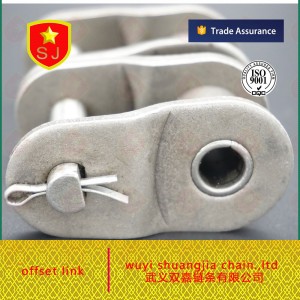Roller chains are an important component in a variety of industrial and mechanical applications. They are widely used to transmit power between two rotating parts for smooth and efficient operation of machinery. However, even the highest quality roller chains require proper tuning to maintain peak performance. In this blog, we’ll dive into the topic of roller chain tuning and explore why finding the perfect balance is so important.
Understand the purpose of roller chain adjustment:
1. Prevent slack:
One of the main reasons for roller chain adjustment is to prevent slack. Over time, chains can stretch or wear, causing sections to slack or loosen. Chain slack can cause erratic motion and reduce power transfer efficiency, leading to costly machine downtime and potential safety hazards. Regular chain adjustments help maintain ideal tension, ensuring smooth operation and increasing the life of the chain and machinery.
2. Ensure appropriate participation:
Proper chain engagement is critical to efficient power transmission. Adjusting the chain to the correct tension ensures that the chain’s rollers, sprockets and other components are perfectly aligned for reliable operation. If the chain is too loose or too tight, it will cause premature wear, increase noise and vibration, and even reduce overall productivity. Proper adjustment provides consistent power transfer and reduces the risk of sprockets skipping chains or teeth.
Factors affecting roller chain adjustment:
1. Initial installation:
When installing a new roller chain, it is critical to set the correct tension from the start. Proper tensioning keeps the chain from being overstressed and reduces the chance of premature failure. Following the manufacturer’s installation and initial adjustment guidelines is critical to having a well-tensioned chain from the start.
2. Chain type and use:
Different roller chains have different design specifications such as size, pitch and material composition. Therefore, the recommended adjustment requirements may also vary. It is important to consider the specific application and follow the manufacturer’s instructions carefully or consult an expert to ensure proper chain adjustment for your machine.
Roller chain adjustment method:
1. Manual adjustment:
Roller chain tension is usually adjusted manually. It involves loosening the tensioner, adjusting the position of the chain, and then retensioning the tensioner to achieve the desired tension. While this method is relatively simple, it can be time-consuming and may require repeated tweaking to find the perfect balance. Due to wear over time, it is necessary to periodically monitor chain tension and adjust.
2. Automatic tensioner:
Automatic tensioners provide a more convenient and reliable solution for roller chain adjustment. These devices use a spring or tensioning system to automatically adjust the tension of the chain to compensate for stretch or wear. Automatic tensioners reduce the need for frequent manual adjustments and provide consistent tension, improving overall performance and reducing maintenance requirements.
Proper roller chain adjustment is critical to maintaining peak performance and extending the life of your chain and machinery. Understanding the purpose and influencing factors of adjustments, as well as adopting the appropriate method, is critical to achieving the perfect balance. Regular maintenance, monitoring and compliance with manufacturer guidelines are essential practices to ensure smooth operation and reliable power delivery in any industrial or mechanical application. So let’s remember that finding the right tension is not just a suggestion, but a necessity for the smooth running of our machines.
Post time: Jul-15-2023

